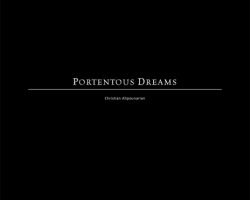Portentous Dreams by Christian Alipounarian is a role playing game supplement published by Raging Swan Press for use with the Pathfinder Roleplaying Game. As such, it is covered by the Open Game License and some parts are considered to be Open Game Content as a result.
This is a 13 page PDF that is available from DriveThruRPG for $1.99 but was purchased at a greatly reduced price as part of a special bundle. Two pages are the front and rear covers, one page is an ad for other supplements, two pages are the front matter, one page is the Contents and Foreword and one page is an ad and the Open Game License. The PDF comes in two versions, one optimised for screen and low end devices, the other for print and high end devices.
 Dreams starts out by generally discussing dreams then giving three different sources for dreams in game; divine, psionic and arcane.
Dreams starts out by generally discussing dreams then giving three different sources for dreams in game; divine, psionic and arcane.
Using Dreams in a Campaign has notes on how to use dreams as foreshadowing, by guiding, being vague but not too vague and that less is better than more. There are suggestions on expanding on something with a second dream if no divination magic is available.
Random Dreaming has a series of tables, from d6 to d20 (one of the d20 tables is missing the first result), for generating a dream, such as tone, objects, locale, colours, environment and more. There’s also a new feat, Oracular Dreamer, which allows the character to lucid dream.
Finally, Sample Dreams has brief outlines of dreams that can be used for a variety of subjects.
Portentous Dreams in Review
The PDF is well bookmarked with only the feat seemingly missing. The Contents is less thorough, only covering the main sections, but it is also hyperlinked. Navigation is excellent for a short supplement. The text maintains a two column format and the only error noticed was the missing table result. There are a few black and white stock images. Presentation is okay.
Dreams are a difficult subject to master in game terms. It is (comparatively) easy to design a dream. It is rather harder to design a dream that is relevant to an adventure that players – not characters – will be able to interpret. Moving it to the characters tends to make interpreting dreams purely mechanical, and as a result makes designing ones practically pointless – it would be easier to say “You had a dream. Roll to interpret it.”
This supplement does provide some useful material for starting out but it doesn’t provide enough material on how to practically design complex dreams that can be interpreted. Dream interpretation in real life has huge lists of symbols with interpretations of what they mean. Whether or not such interpretations are true such a method would make designing dreams for game usage far easier. This supplement, probably because of its brevity, is a little short on providing details on how to really create dream. Portentous Dreams is an interesting start, but far too short and not in enough depth to be truly useful, and it can be found by clicking here.

Leave a Reply